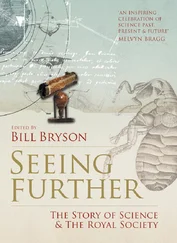Bill Bryson - At Home
Здесь есть возможность читать онлайн «Bill Bryson - At Home» весь текст электронной книги совершенно бесплатно (целиком полную версию без сокращений). В некоторых случаях можно слушать аудио, скачать через торрент в формате fb2 и присутствует краткое содержание. Жанр: Старинная литература, на английском языке. Описание произведения, (предисловие) а так же отзывы посетителей доступны на портале библиотеки ЛибКат.
- Название:At Home
- Автор:
- Жанр:
- Год:неизвестен
- ISBN:нет данных
- Рейтинг книги:4 / 5. Голосов: 1
-
Избранное:Добавить в избранное
- Отзывы:
-
Ваша оценка:
- 80
- 1
- 2
- 3
- 4
- 5
At Home: краткое содержание, описание и аннотация
Предлагаем к чтению аннотацию, описание, краткое содержание или предисловие (зависит от того, что написал сам автор книги «At Home»). Если вы не нашли необходимую информацию о книге — напишите в комментариях, мы постараемся отыскать её.
At Home — читать онлайн бесплатно полную книгу (весь текст) целиком
Ниже представлен текст книги, разбитый по страницам. Система сохранения места последней прочитанной страницы, позволяет с удобством читать онлайн бесплатно книгу «At Home», без необходимости каждый раз заново искать на чём Вы остановились. Поставьте закладку, и сможете в любой момент перейти на страницу, на которой закончили чтение.
Интервал:
Закладка:
The important thought to hold on to is that for the first 99 percent of our history as beings we didn’t do much of anything but procreate and survive. Then people all over the world discovered farming, irrigation, writing, architecture, government, and the other refinements of being that collectively add up to what we fondly call civilization. This has been many times described as the most momentous transformation in human history, and the first person who fully recognized and conceptualized the whole complex process was Vere Gordon Childe. He called it the Neolithic Revolution.
It remains one of the great mysteries of human development. Even now scientists can tell you where it happened and when, but not why. Almost certainly (well, we think almost certainly), it had something to do with some big changes in the weather. About twelve thousand years ago, the Earth began to warm quite rapidly; then for reasons unknown it plunged back into bitter cold for a thousand years or so—a kind of last gasp of the ice ages. This period is known to scientists as the Younger Dryas. (It was named for an arctic plant, the dryas, which is one of the first to recolonize land after an ice sheet withdraws. There was an Older Dryas period, too, but it wasn’t important for human development.) After ten further centuries of biting cold, the world warmed rapidly again and has stayed comparatively warm ever since. Almost everything we have done as advanced beings has been done in this brief spell of climatological glory.
The interesting thing about the Neolithic Revolution is that it happened all over the Earth, among people who could have no idea that others in distant places were doing precisely the same things. Farming was independently invented at least seven times—in China, the Middle East, New Guinea, the Andes, the Amazon basin, Mexico, and West Africa. Cities likewise emerged in six places—China, Eygpt, India, Mesopotamia, Central America, and the Andes. That all of these things happened all over, often without any possibility of shared contact, seems uncanny. As one historian has put it: “When Cortés landed in Mexico he found roads, canals, cities, palaces, schools, law courts, markets, irrigation works, kings, priests, temples, peasants, artisans, armies, astronomers, merchants, sports, theatre, art, music, and books”—all invented quite independently of similar developments on other continents. And some of it is a little uncanny, to be sure. Dogs, for instance, were domesticated at much the same time in places as far apart as England, Siberia, and North America.
It is tempting to think of this as a kind of global lightbulb moment, but that is really stretching things. Most of the developments actually involved vast periods of trial, error, and adjustment, often over the course of thousands of years. Agriculture started 11,500 years ago in the Levant, but 8,000 years ago in China and only a little over 5,000 years ago in most of the Americas. People had been living with domesticated animals for 4,000 years before it occurred to anyone to put the bigger of them to work pulling plows; Westerners used a clumsy, heavy, exceedingly inefficient straight-bladed plow for a further 2,000 years before someone introduced them to the simple curved plow the Chinese had been using since time immemorial. Mesopotamians invented and used the wheel, but neighboring Egypt waited 2,000 years before adopting it. In Central America, the Maya also independently invented the wheel but couldn’t think of any practical applications for it and so reserved it exclusively for children’s toys. The Incas didn’t have wheels at all, or money or iron or writing. The march of progress, in short, has been anything but predictable and rhythmic.
For a long time it was thought that settling down—sedentism, as it is known—and farming went hand in hand. People, it was assumed, abandoned nomadism and took up farming in order to guarantee their food supplies. Killing wild game is difficult and chancy, and hunters must often have come home empty-handed. Much better to control your food sources and have them permanently and conveniently at hand. In fact, researchers realized quite early on that sedentism was not nearly as straightforward as that. At about the time that Childe was excavating at Skara Brae, a Cambridge University archaeologist named Dorothy Garrod, working in Palestine at a place called Shuqba, discovered an ancient culture that she dubbed the Natufian, after a wadi, or dried riverbed, that lay nearby. The Natufians built the first villages and founded Jericho, which became the world’s first true city. So they were very settled people. But they didn’t farm. This was most unexpected. However, other excavations across the Middle East showed that it was not uncommon for people to settle in permanent communities long before they took up farming—sometimes by as much as eight thousand years.
So if people didn’t settle down to take up farming, why then did they embark on this entirely new way of living? We have no idea—or actually, we have lots of ideas, but we don’t know if any of them are right. According to the historian Felipe Fernández-Armesto, at least thirty-eight theories have been put forward to explain why people took to living in communities: that they were driven to it by climatic change, or by a wish to stay near their dead, or by a powerful desire to brew and drink beer, which could only be indulged by staying in one place. One theory, evidently seriously suggested (Jane Jacobs cites it in her landmark work of 1969, The Economy of Cities ), was that “fortuitous showers” of cosmic rays caused mutations in grasses that made them suddenly attractive as a food source. The short answer is that no one knows why agriculture developed as it did.
Making food out of plants is hard work. The conversion of wheat, rice, corn, millet, barley, and other grasses into staple foodstuffs is one of the great achievements of human history, but also one of the more unexpected ones. You have only to consider the lawn outside your window to realize that grass in its natural state is not an obvious foodstuff for nonruminants such as ourselves. For us, making grass edible is a challenge that can be solved only with a lot of careful manipulation and protracted ingenuity. Take wheat. Wheat is useless as a food until made into something much more complex and ambitious like bread, and that takes a great deal of effort. Somebody must first separate out the grain and grind it into meal, then convert the meal into flour, then mix that with other components like yeast and salt to make dough. Then the dough must be kneaded to a particular consistency, and finally the resulting lump must be baked with precision and care. The scope for failure in the last step alone is so great that in every society in which bread has featured, baking has been turned over to professionals from the earliest stages.
It is not as if farming brought a great improvement in living standards either. A typical hunter-gatherer enjoyed a more varied diet and consumed more protein and calories than settled people, and took in five times as much vitamin C as the average person today. Even in the bitterest depths of the ice ages, we now know, nomadic people ate surprisingly well—and surprisingly healthily. Settled people, by contrast, became reliant on a much smaller range of foods, which all but ensured dietary insufficiencies. The three great domesticated crops of prehistory were rice, wheat, and maize, but all had significant drawbacks as staples. As the journalist John Lanchester explains: “Rice inhibits the activity of Vitamin A; wheat has a chemical that impedes the action of zinc and can lead to stunted growth; maize is deficient in essential amino acids and contains phytates, which prevent the absorption of iron.” The average height of people actually fell by almost six inches in the early days of farming in the Near East. Even on Orkney, where prehistoric life was probably as good as it could get, an analysis of 340 ancient skeletons showed that hardly any people lived beyond their twenties.
Читать дальшеИнтервал:
Закладка:
Похожие книги на «At Home»
Представляем Вашему вниманию похожие книги на «At Home» списком для выбора. Мы отобрали схожую по названию и смыслу литературу в надежде предоставить читателям больше вариантов отыскать новые, интересные, ещё непрочитанные произведения.
Обсуждение, отзывы о книге «At Home» и просто собственные мнения читателей. Оставьте ваши комментарии, напишите, что Вы думаете о произведении, его смысле или главных героях. Укажите что конкретно понравилось, а что нет, и почему Вы так считаете.












